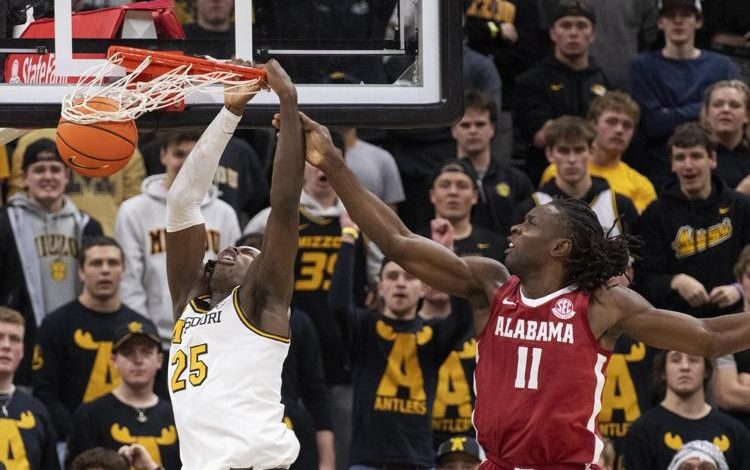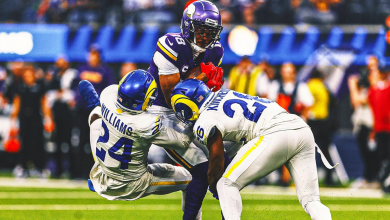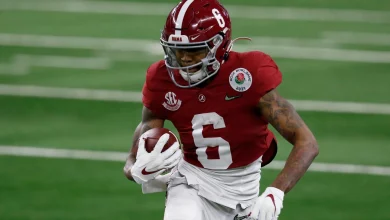Alabama’s No. 4 basketball team loses to No. 15 Missouri on the road following a brutal start.

The Alabama Crimson Tide men’s basketball team, ranked No. 4 in the nation, faced a tough road challenge in a high-stakes SEC matchup against the Missouri Tigers, who were ranked No. 15. The contest, which took place at Mizzou Arena in Columbia, Missouri, on a chilly winter night, had all the hallmarks of a thrilling, tightly-contested game, with Alabama looking to extend its dominance atop the SEC standings. However, what transpired on the court was anything but what fans had anticipated.
Alabama, which had been riding a wave of momentum with a top-tier offense, fell flat right from the opening tip-off. A brutal start left the Crimson Tide on their heels for much of the first half, and despite some second-half attempts to mount a comeback, Missouri’s tight defense and balanced offensive play led them to a commanding 84-71 victory. The loss raised questions about Alabama’s ability to handle adversity on the road and exposed some of their vulnerabilities as they head into the latter stages of the season. In this analysis, we will break down what went wrong for the Crimson Tide, highlight key moments in the game, and look at the broader implications of this defeat for Alabama’s national championship aspirations.
The Early Struggles: A Brutal Start
From the opening minutes of the game, Alabama was clearly out of sync. Their typically fast-paced, high-scoring offense seemed sluggish and uncharacteristically disjointed, while Missouri immediately took advantage with an aggressive defensive approach. The Tigers, led by head coach Dennis Gates, have been known for their disruptive defense this season, and they set the tone early by denying Alabama’s guards the open looks they typically feast on. The Crimson Tide was unable to settle into any kind of rhythm, struggling to create clean offensive possessions.
Part of Alabama’s early woes stemmed from their shooting struggles. The Tide came out cold from the floor, missing several open looks, including three-pointers that they had been consistently knocking down in previous games. At the same time, Missouri was in full flow, running an efficient offense and taking advantage of every Alabama misstep. The Tigers capitalized on fast breaks, defensive rebounds, and high-percentage shots near the basket, quickly building a double-digit lead within the first 10 minutes of the game.
The first half saw Alabama shoot just 36% from the field, a far cry from their usual high efficiency. Their leading scorer, Brandon Miller, struggled to find his rhythm, often forcing shots or getting trapped in Missouri’s defense. Meanwhile, Missouri’s offense was clicking. They used a well-balanced attack, with several players contributing to their lead. The Tigers’ senior guard, Kobe Brown, had a standout performance in the opening half, contributing 12 points and setting the tone with his ability to stretch the floor and get to the rim. By halftime, Missouri had built a commanding 47-30 lead, and Alabama was left searching for answers.
Defensive Issues: Missing Key Matchups
One of the main storylines of the game was Alabama’s defensive struggles. Known for their defense under head coach Nate Oats, the Crimson Tide’s ability to lock down opponents has been a major part of their success. However, in this matchup, their defense was inconsistent at best. Alabama failed to contain Missouri’s key players, particularly in one-on-one situations.
Kobe Brown’s dominance on the offensive end was a major concern, as Alabama’s forwards struggled to guard him in the post and on the perimeter. Brown’s combination of size and skill allowed him to either overpower smaller defenders or create enough separation to hit mid-range jumpers. Alabama’s defense also lacked intensity in key moments. They allowed Missouri to break down their zone defense with ease, and even when Alabama managed to force turnovers, they failed to capitalize on those opportunities. The Tigers, conversely, turned their defensive stops into quick transition points, making Alabama pay for every mistake.
Moreover, Missouri’s ball movement was crisp, and they did a fantastic job of finding open shooters in transition. Alabama’s perimeter defense, usually a strength of their game, was porous. Missouri’s guards—led by DeAndre Gholston and Nick Honor—were able to penetrate the lane, kick out to open shooters, and convert on several wide-open three-pointers. The Crimson Tide’s inability to contest shots and communicate defensively allowed Missouri to dictate the tempo of the game, setting the stage for a very difficult second half for Alabama.
The Struggles of Alabama’s Star Power
Alabama’s success this season has largely been due to the play of freshman sensation Brandon Miller, who has emerged as one of the top players in the country. As a projected NBA lottery pick, Miller has been the focal point of Alabama’s offense, and for much of the season, he has carried the team on his back. However, in this game, Miller’s performance was far from stellar. Missouri’s defense swarmed him, and Miller was often forced into tough shots or into situations where he was unable to create effective looks for himself or his teammates.
Miller finished the game with just 15 points, shooting 5-of-15 from the field. He struggled to find his usual space, and his perimeter shooting—one of his most potent weapons—was off, hitting just 2-of-8 from three-point range. His lack of production was compounded by his inability to get to the free-throw line, where he has typically excelled in drawing fouls.
Part of the issue was Alabama’s inability to execute their offensive sets, which often had Miller running into double-teams or defensive traps that made it difficult for him to create. It wasn’t just Miller, though. Fellow guards Jahvon Quinerly and Mark Sears also struggled, combining for just 18 points on 7-of-19 shooting. Alabama’s offense lacked the usual flow and creativity, and it became clear that without their star players firing on all cylinders, they were vulnerable to a team like Missouri, which was playing with confidence and intensity.
The Comeback Effort: Too Little, Too Late
In the second half, Alabama tried to regroup and make a run to close the gap. After a brutal start, they began to chip away at Missouri’s lead, thanks to some more aggressive play on both ends of the floor. Nate Oats made some strategic adjustments, putting more pressure on Missouri’s ball handlers and pushing the pace of the game. Alabama’s defense started to tighten up, forcing turnovers and creating fast-break opportunities.
A few key plays, including a pair of three-pointers from Sears and a steal and dunk by Quinerly, got the Tide back within striking distance. At one point, they cut Missouri’s lead to 8 points with just under 5 minutes left in the game. However, every time Alabama seemed poised to make a serious push, Missouri responded with timely plays of their own. Whether it was a clutch three-pointer from Gholston, a key defensive stop by Brown, or a tough layup from Honor, the Tigers had an answer for every Alabama rally.
The Crimson Tide also struggled at the free-throw line, missing several crucial attempts that could have helped them close the gap. As the clock wound down, Missouri’s lead remained comfortable, and Alabama’s chances of a late-game miracle evaporated. By the time the final buzzer sounded, the Tigers had secured an 84-71 victory, leaving Alabama to reflect on what had been a frustrating, poorly executed performance.
The Bigger Picture: Implications for Alabama’s National Championship Hopes
While one loss does not define a season, Alabama’s defeat against Missouri raises several important questions about the Crimson Tide’s prospects for the rest of the season. Heading into the SEC tournament and the NCAA tournament, this loss is a reminder that Alabama still has some vulnerabilities that could be exploited by other teams with similar defensive intensity.
For one, the performance of Brandon Miller will be a key factor for Alabama moving forward. If the Crimson Tide are to have any hopes of making a deep run in March Madness, they need Miller to be more consistent, especially in road environments where the pressure is higher. His ability to perform in hostile arenas will be critical, and this game showcased the importance of having other players step up when Miller is being locked down by tough defenses.
Additionally, Alabama’s defensive lapses were a glaring issue in this game. While the Crimson Tide have shown they can be one of the best defensive teams in the country, their failure to adjust to Missouri’s ball movement and penetration indicates that they may need to refine their schemes. If they can’t lock down opposing offenses with the same intensity they do at home, they could find themselves struggling in tight tournament games.
Despite the loss, Alabama’s talent and potential are undeniable. With the right adjustments, they can bounce back, but this game serves as a cautionary tale about the challenges of road play in the SEC and the need for all-around consistency if they are to achieve their championship aspirations.
In the end, Alabama’s road loss to Missouri, while disappointing, is a wake-up call—a chance for the Crimson Tide to recalibrate and refocus as they enter the most important stretch of the season.









